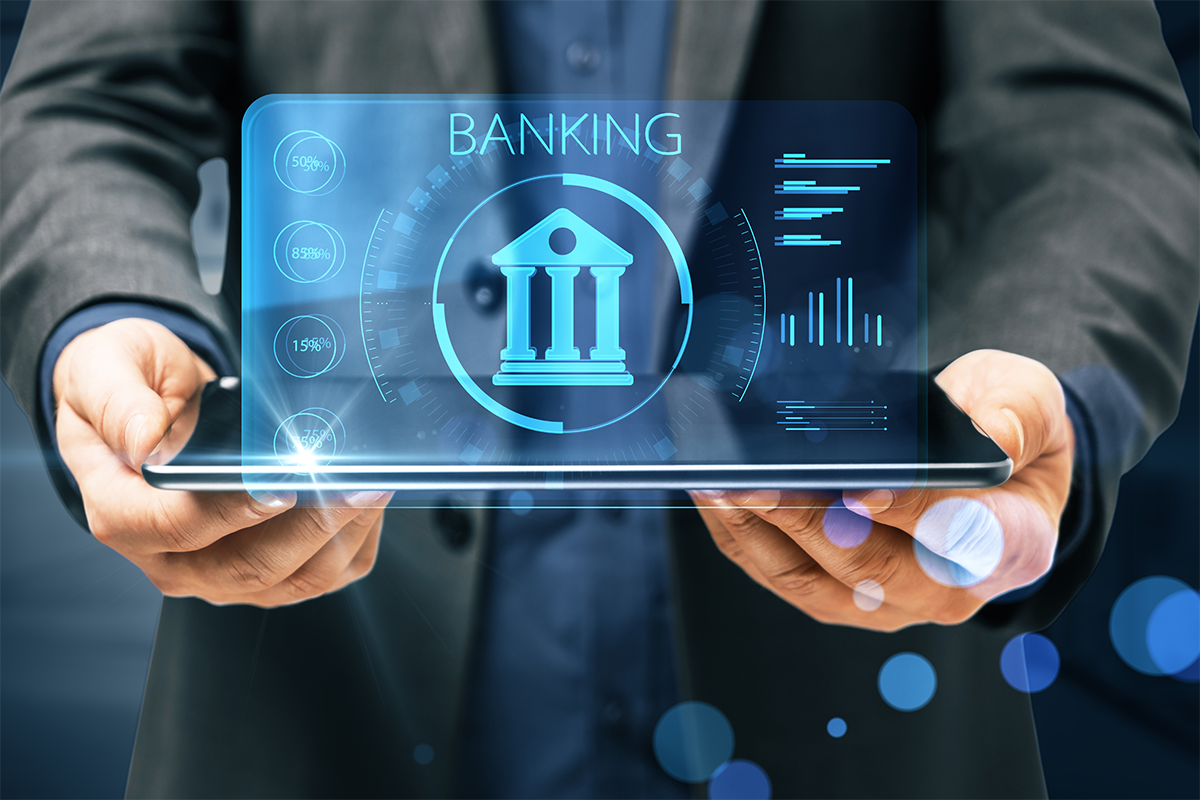The banking landscape is undergoing a seismic shift. Brick-and-mortar branches are giving way to a digital universe where mobile apps handle transactions, chatbots answer questions, and AI tailors financial products to individual needs. Digital transformation in the banking sector is not just a shiny new trend; it’s a fundamental reimagining of how banks interact with customers and conduct business.
Why Go Digital?
- Customer expectations are changing: Today’s customers are tech-savvy and demand seamless, personalized banking experiences. They want mobile-first access, 24/7 support, and financial solutions that evolve with their needs.
- Competition is fierce: Fintech startups and challenger banks are disrupting the traditional banking model with innovative digital offerings. To stay ahead, established banks need to adapt and embrace new technologies.
- Operational efficiency: By automating manual processes and leveraging data analytics, banks can reduce costs, improve decision-making, and streamline operations.
For businesses, embracing digital transformation in banking isn’t just about keeping up with the Joneses; it’s about survival. Here’s why:
Understanding Digital Transformation in Banking
Before delving into the specifics, let’s grasp the concept of digital transformation in the banking sector. This entails the integration of digital technologies into every aspect of banking operations, reshaping customer experiences, optimizing processes, and driving innovation.
Key Components: Explore the core components of digital transformation, including software development services, data analytics solutions, and Mobile Application Services. These elements form the foundation for a seamless transition into the digital era.
Customized Digital Transformation: Delve into the importance of tailored solutions for banks. Customized digital transformation services ensure that the unique needs and challenges of each financial institution are addressed effectively.
The Pillars of Digital Transformation
So, what does digital transformation in banking look like in practice? Let us explore some key pillars:
- Mobile-first approach: Develop robust mobile apps that offer core banking functionalities, personalized financial insights, and seamless integration with third-party services.
- Data-driven insights: Leverage data analytics to understand customer behaviour, personalize offerings, and identify risks proactively. Think fraud detection, credit scoring, and dynamic product recommendations.
- Artificial intelligence and machine learning: Employ AI and ML to automate tasks, personalize customer experiences, and develop smarter financial products. Chatbots that answer questions, AI-powered investment advisors, and fraud detection algorithms are just a few examples.
- Open banking: Collaborate with fintech companies and third-party developers through APIs to create a richer ecosystem of financial services. This fosters innovation and gives customers more choices.
- Cybersecurity: With increased reliance on technology, robust cybersecurity measures become paramount. Secure data storage, multi-factor authentication, and continuous vulnerability assessments are essential to protect customer information.
How Businesses Can Leverage Digital Transformation
Now, let us shift focus to how businesses can benefit from digital transformation in the banking sector:
- Streamline financial processes: Reduce operational costs and improve efficiency by automating tasks like accounts payable, payroll, and expense management.
- Access better financial tools: Gain access to advanced financial analysis and reporting tools that provide deeper insights into your business performance.
- Improve customer relationships: Deliver personalized financial solutions and enhance customer engagement through mobile banking, online portals, and personalized financial advice.
- Innovate new products and services: Partner with fintech companies or leverage innovative banking technologies to develop unique financial products and services tailored to your specific needs. One such products is derived from the Internet of Things or simply IoT. Innovations of IoT for Smart Banking and Finance has taken the banking and finance sector by storm and has delivered extraordinary results in improving the banking experience.
Digital transformation in banking places a significant emphasis on enhancing customer experiences. From personalized services to seamless transactions, this chapter explores the ways in which customers are at the center of the transformation.
Mobile Banking Applications: With the rise of Mobile Application Services, customers can perform transactions, check balances, and manage accounts on the go. Understand how mobile apps are becoming the primary interface between customers and their banks.
Personalized Services: Explore how Data Analytics Solutions contribute to the creation of personalized services. Banks can analyze customer behavior and preferences to offer tailored financial products and services.
- Optimizing Operational Efficiency
One of the primary goals of digital transformation in banking is to optimize operational efficiency. This chapter delves into how technology is streamlining internal processes, reducing costs, and improving overall efficiency.
Automated Processes: Discover how software development services are automating routine tasks, from document verification to transaction processing. This automation not only saves time but also minimizes errors.
Data Analytics for Decision-Making: Understand the role of data analytics solutions in providing valuable insights for decision-making. Banks can leverage data to identify trends, assess risks, and make informed strategic choices.
- Overcoming Challenges in Digital Transformation
While the benefits of digital transformation are immense, there are challenges that financial institutions may encounter. From cybersecurity concerns to cultural shifts, this chapter addresses how banks can navigate these obstacles.
Cultural Shifts and Employee Training: Explore the need for a cultural shift within organizations to embrace digital transformation. Employee training programs ensure that staff members are equipped with the skills required for the digital era.
Ready to Embrace the Digital Wave?
Digital transformation in banking is not a one-time project; it is a continuous journey of embracing new technologies and evolving customer expectations. Businesses that stay ahead of the curve will thrive in this new digital landscape. Here are some key steps you can take:
- Assess your current digital maturity: Analyse your existing technology infrastructure, processes, and customer interactions to identify areas for improvement.
- Develop a digital transformation strategy: Define your goals, identify key technologies, and create a roadmap for implementation.
- Partner with experienced providers: Look for software development services, data analytics solutions, and mobile application services providers with expertise in digital transformation for the banking sector.
- Invest in your people: Train employees on new technologies and processes to ensure successful implementation and adoption.
As we conclude our exploration of digital transformation in the banking sector, it is evident that this paradigm shift is not just a technological upgrade but a holistic transformation of business strategies. The innovations of IoT, the focus on customer experience, and the optimization of operational efficiency collectively shape the future of banking.
Financial institutions that embrace these changes are not just surviving but thriving in the digital age. The journey toward smart banking is an ongoing process, and those who adapt and innovate are poised to lead the way into a new era of financial services.
This blog provides a comprehensive overview of digital transformation in banking and its implications for businesses. Remember, this is just the beginning of the conversation. Feel free to adapt and expand on the content to suit your specific audience and target their unique needs within the evolving landscape of digital banking.










